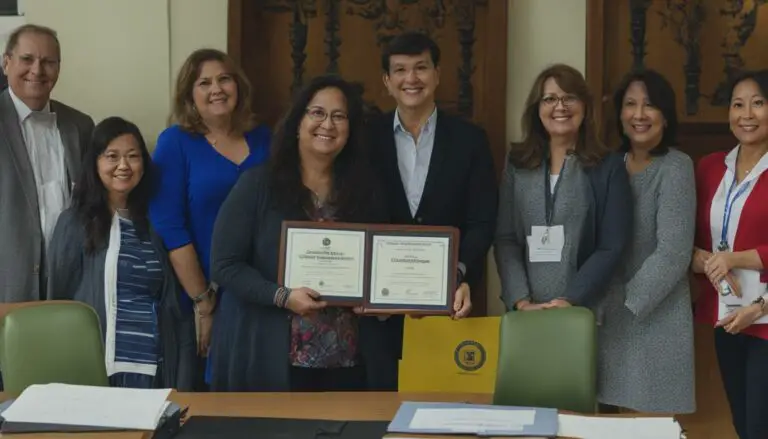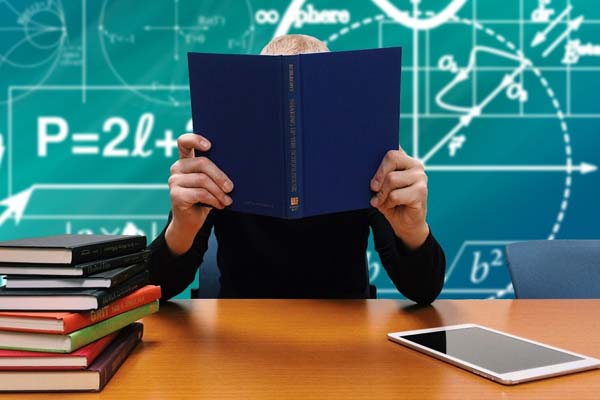Mastering the Art of Lesson Planning for IGCSE Teachers
Lesson planning is vital for IGCSE teachers, laying the groundwork for effective teaching and successful student outcomes. This guide will help IGCSE teachers understand and plan effective lessons.
From understanding the role of effective teaching in student outcomes to incorporating active learning strategies and teacher reflection, we will provide valuable insights and practical tips that will empower teachers to excel in their lesson planning.
Through this journey, you will learn the importance of quality instruction and curriculum alignment, the significance of setting clear learning objectives and goals, and strategies for designing engaging lesson activities.
Additionally, we’ll explore the advantages of integrating technology, tailoring instruction to cater to various student needs, and consistently enhancing your lesson-planning skills through ongoing professional development.
Join us as we embark on a quest to master the art of lesson planning, equipping IGCSE teachers with the knowledge and tools they need to create purposeful, impactful, and practical lessons for their students.
Lesson Planning for IGCSE Teachers
The Role of Effective Teaching in Student Outcomes
Effective teaching plays a vital role in determining student outcomes. When teachers employ instructional strategies tailored to their student’s needs and learning styles, they create a conducive learning and academic growth environment.
Quality of Instruction and Curriculum Alignment
Good lesson planning is essential for teachers. They need to ensure that what they teach matches the goals and standards of the IGCSE curriculum. This helps students learn better.
Active Learning Strategies and Teacher Reflection
Effective lesson planning relies on integrating active learning strategies and teacher reflection. Teachers can foster dynamic and interactive learning environments by promoting student participation through collaborative activities, discussions, and hands-on experiences.
Additionally, consistent reflection on teaching practices enables educators to pinpoint areas for improvement and make necessary adjustments, thereby enhancing the overall effectiveness of their lessons.
Implementing effective teaching practices, ensuring quality instruction and curriculum alignment, incorporating active learning strategies, and engaging in ongoing teacher reflection collectively contribute to developing comprehensive and impactful lesson plans.
Essential Components of an Effective Lesson Plan
To create an effective lesson plan, teachers must understand the essential components contributing to successful teaching and learning.
🌟 Hey Students! 🚀 Ready for the ultimate experience? Join us on Studentsinside.com's Facebook, YouTube, WhatsApp, and LinkedIn. Click now for tips, fun, and success vibes! 🌈✨ #StudentLife #JoinUs
Learning Objectives and Goals
Learning objectives and goals focus on the lesson and guide teachers’ and students’ learning journey.
These objectives establish what students are expected to learn by the end of the lesson and help teachers design targeted activities and assessments.
When establishing learning objectives and goals, it’s crucial to ensure they align with the SMART criteria, ensuring they are Specific, Measurable, Attainable, Relevant, and Time-bound.
Structuring Engaging Lesson Activities
Engaging in lesson activities is essential for capturing students’ interest and promoting active learning.
Engaging activities include hands-on experiments, group discussions, multimedia presentations, and collaborative projects. These activities enhance students’ understanding and retention of the content and foster critical thinking, problem-solving, and communication skills.
Assessment and Feedback Mechanisms
Assessment and feedback are integral to learning as they inform teachers about students’ progress and guide instructional decision-making.
To be effective, assessment strategies should match the learning objectives and offer clear signs of student achievement.
This could involve ongoing assessments like in-class quizzes or discussions (formative assessments) and final assessments like tests or projects (summative assessments).
Moreover, offering feedback promptly and constructively is key. This helps students recognize their strengths and areas for improvement and encourages a growth mindset, ultimately boosting their learning outcomes.
Curriculum Planning for IGCSE
Curriculum planning plays a crucial role in effective lesson planning for IGCSE teachers. It involves designing a curriculum that aligns with the IGCSE standards and caters to the needs of students.
When designing a curriculum, it is essential to identify the desired learning outcomes. These outcomes serve as the foundation for the curriculum and guide the selection of appropriate content and activities.
Teachers should consider the specific knowledge, skills, and understanding they want their students to gain through the curriculum.
Selecting suitable resources is another vital aspect of curriculum planning. Teachers should choose relevant resources that engage and meet the needs of their students.
Whether it’s textbooks, online materials, or supplementary resources, the selected resources should align with the learning outcomes and support effective teaching and learning experiences.
Additionally, incorporating authentic assessment tasks into the curriculum helps gauge students’ understanding and progress.
| Benefits of Curriculum Planning for IGCSE Teachers |
|---|
| 1. Aligns with IGCSE standards |
| 2. Promotes meaningful learning experiences |
| 3. Provides a clear roadmap for teaching and learning |
| 4. Enables effective resource selection |
| 5. Facilitates authentic assessment and feedback |
Strategies for Differentiated Instruction
Differentiated instruction is a crucial approach for meeting the diverse needs of students in an IGCSE classroom.
One effective strategy for differentiated instruction is the use of flexible grouping. Teachers can divide students into small groups based on their learning needs and assign tasks or activities that align with their abilities. This approach promotes collaboration and enables students to work at their own pace.
Another strategy is the implementation of varied instructional materials and resources. Teachers can provide different reading materials, multimedia resources, or hands-on activities to accommodate the different learning preferences of their students.
This approach ensures all students can access content that suits their learning styles. Additionally, providing choice and autonomy in assignments can foster individualized learning experiences.
Teachers can offer students multiple options for completing assignments, allowing them to choose tasks that align with their interests and strengths. This promotes student engagement and ownership of their learning.
Effective teacher-student communication is also an essential aspect of differentiated instruction. Regularly checking in with students, providing specific feedback, and offering individualized support are essential to meeting their unique needs. This personalized guidance helps students overcome challenges and achieve their academic goals.
Incorporating technology into differentiated instruction can further enhance the learning experience. Educational apps, online platforms, and multimedia resources can provide interactive and engaging opportunities for diverse learners to access content and demonstrate their understanding.
Incorporating Technology in IGCSE Lesson Plans
Technology has revolutionized education, and IGCSE teachers can harness its power to create more engaging and effective lesson plans.
Utilizing Digital Lesson Planning Tools
An effective way to bring technology into your IGCSE lesson plans is by using digital lesson-planning tools. These tools offer a user-friendly platform for teachers to organize, create, and share lesson plans.
You can enhance the lesson-planning process by using digital lesson-planning tools. These tools have customizable templates, facilitate easy collaboration, and provide educational resources. They enable you to plan lessons more efficiently and effectively.
Enhancing Student Engagement Through Educational Technologies
Educational technologies offer exciting opportunities for IGCSE teachers to enhance student engagement. Interactive presentations, educational apps, and multimedia resources can make lessons more visually appealing and interactive, capturing students’ interest and fostering active participation.
| Benefits of Incorporating Technology in IGCSE Lesson Plans |
|---|
| Enhanced student engagement |
| Increased access to educational resources |
| Promotes interactive and collaborative learning |
| Facilitates personalized and differentiated instruction |
| Enables real-time assessment and feedback |
Lesson Planning Techniques for Varied Learning Styles
Addressing the Myth of Learning Styles
There has been a long-standing belief that people have specific learning styles, such as visual, auditory, or kinesthetic. However, recent research has suggested that learning styles may not be as accurate or impactful as previously thought.
Studies have shown that individuals learn and process information multimodally, drawing on various senses and cognitive processes.
While understanding individual preferences and providing diverse learning experiences is important, teachers must avoid labeling students solely based on a specific learning style. Instead, they should create a supportive learning environment that appeals to various learning modalities.
Creating Content-Rich, Skill-Enhancing Lessons
All students benefit from content-rich, skill-enhancing lessons regardless of individual learning styles.
One effective technique is to provide students with opportunities for hands-on learning experiences. This can involve interactive activities, experiments, or real-world applications of the subject matter.
Additionally, teachers should focus on creating lessons that are relevant and meaningful to students’ lives.
Furthermore, incorporating different modes of presentation, such as visual aids, multimedia resources, and group discussions, can cater to diverse learning preferences.

Comparing Lesson Planning Techniques for Varied Learning Styles
| Learning Style | Techniques for Lesson Planning |
|---|---|
| Visual Learners | 1. Incorporate visual aids such as infographics, diagrams, or charts 2. Use multimedia resources like videos or slideshows 3. Provide opportunities for visual note-taking or organizing information visually |
| Auditory Learners | 1. Include audio elements such as podcasts or recorded lectures 2. Encourage discussions and oral presentations 3. Use mnemonic devices or rhymes to reinforce key concepts |
| Kinesthetic Learners | 1. Incorporate hands-on activities or experiments 2. Allow for movement during lessons, such as role-playing or simulations 3. Provide manipulatives or tactile materials to engage the sense of touch |
Tips for Continued Professional Development in Lesson Planning
Improving your lesson-planning skills as an IGCSE teacher is key to professional development. Here’s a straightforward approach:
1. Attend Learning Events: Join workshops, conferences, and seminars on enhancing lesson planning. Gain insights and strategies from experienced educators.
2. Embrace Online Learning: Explore online courses or pursue advanced degrees in education to broaden your knowledge.
3. Build Connections: Connect with fellow educators by joining professional organizations and online forums. Engage in discussions to exchange ideas and discover diverse teaching methods.
4. Stay Informed: Read educational blogs, journals, and publications by using the latest teaching strategies and resources. Follow reputable education websites and social media accounts for valuable insights.
Following these steps, you can continually evolve your skills and maintain effectiveness as an IGCSE teacher.
FAQ
Why is lesson planning important for IGCSE teachers?
Lesson planning is essential for IGCSE teachers as it lays the foundation for successful teaching and student outcomes. It helps teachers set clear objectives, organize content, and cater to the diverse needs of students.
How can IGCSE teachers master the art of lesson planning?
IGCSE teachers can master the art of lesson planning by focusing on effective teaching techniques, ensuring quality instruction and curriculum alignment, using active learning strategies, and reflecting on their teaching practices.
What are the essential components of an effective lesson plan?
The essential components of an effective lesson plan include clear learning objectives and goals, engaging lesson activities, and practical assessment and feedback mechanisms to measure student progress.
How can IGCSE teachers design a curriculum that aligns with the standards?
IGCSE teachers can design a curriculum that aligns with the standards by mapping learning outcomes, selecting appropriate resources, and incorporating authentic assessment tasks.
Why is differentiated instruction necessary in an IGCSE classroom?
Differentiated instruction is vital in an IGCSE classroom as it allows teachers to meet the diverse needs of students by customizing instruction based on their learning styles, abilities, and interests.
How can IGCSE teachers incorporate technology effectively into their lesson plans?
IGCSE teachers can incorporate technology effectively into their lesson plans by utilizing digital lesson planning tools and leveraging educational technologies to enhance student engagement and promote interactive learning experiences.
How can teachers accommodate different learning styles in their lesson planning?
Teachers can accommodate different learning styles in their lesson planning by utilizing various instructional strategies and creating content-rich, skill-enhancing lessons that cater to the diverse needs of students.
How can IGCSE teachers continue to improve their lesson-planning skills?
IGCSE teachers can continue to improve their lesson planning skills by engaging in continuous professional development opportunities, networking with fellow educators, and staying updated with the latest teaching strategies and resources.








